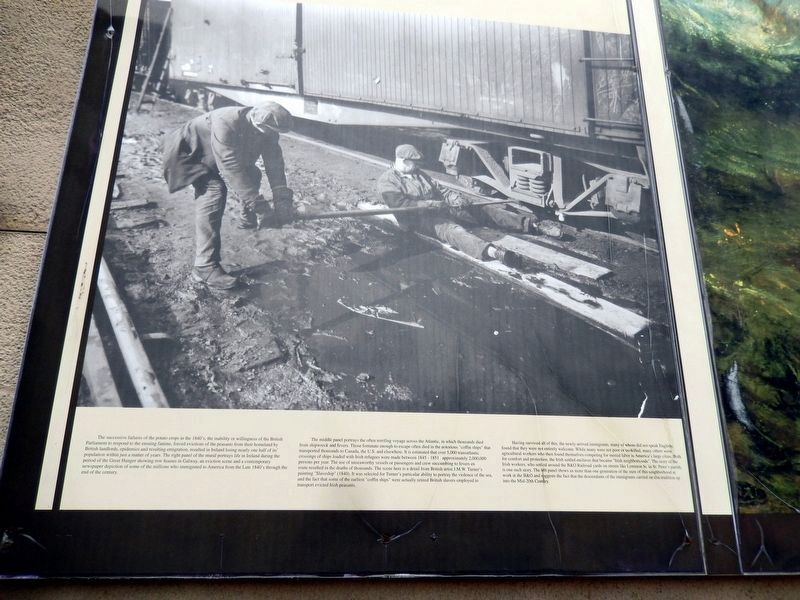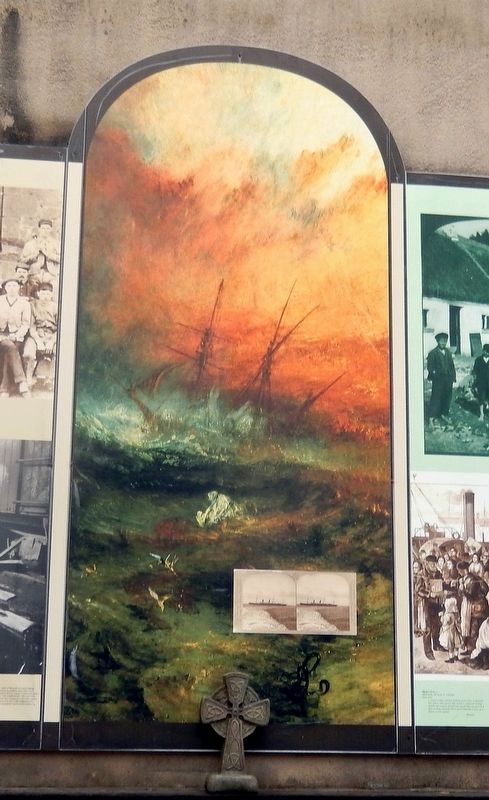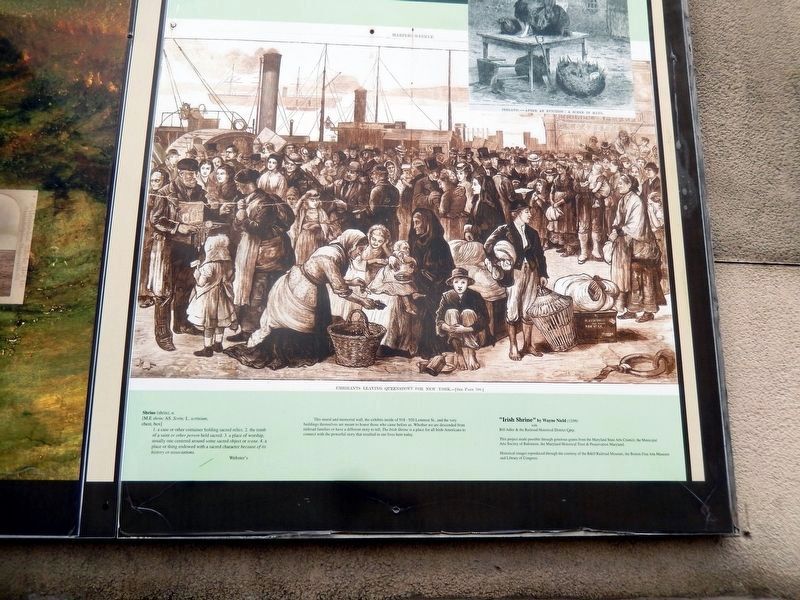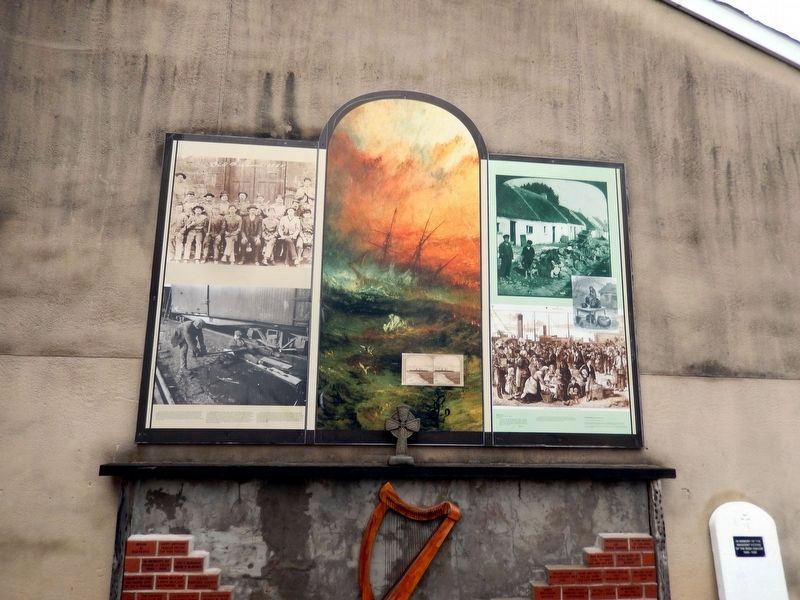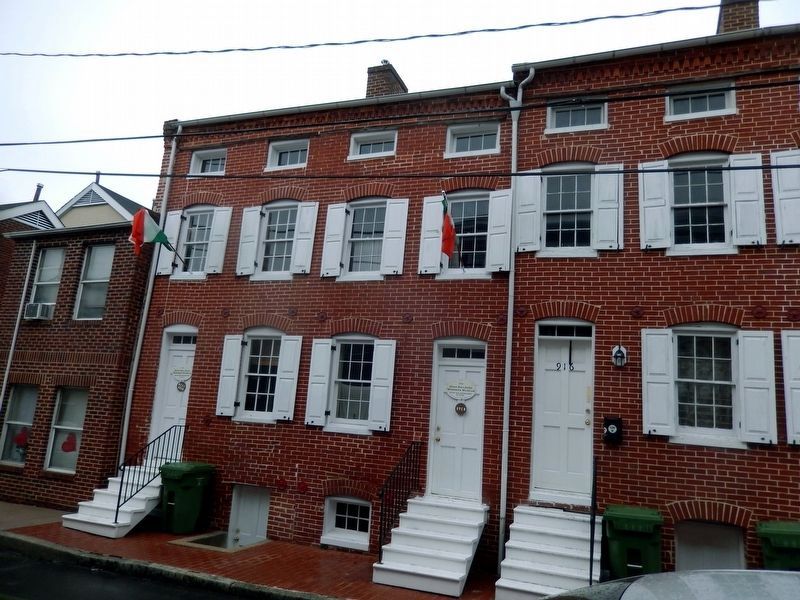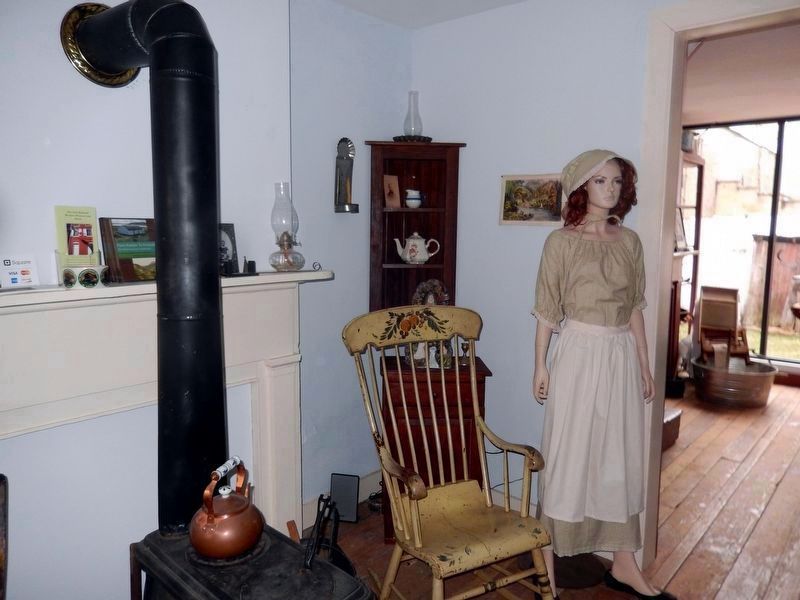Hollins Market in Baltimore, Maryland — The American Northeast (Mid-Atlantic)
Irish Railroad Workers Shrine
The successive failures of the potato crops in the 1840ís, the inability or willingness of the British Parliament to respond to the ensuing famine, forced evictions of the peasants from their homeland by British landlords, epidemics and resulting emigration, resulted in Ireland losing nearly one half of itsí population within just a matter of years. The right panel of the mural portrays life in Ireland during the period of the Great Hunger showing row houses in Galway, an eviction scene and a contemporary newspaper depiction of some of the millions who immigrated to America from the late 1840ís through the end of the century.
The middle panel portrays the often terrifying voyage across the Atlantic, in which thousands died from shipwreck and fevers. Those fortunate enough to escape often died in the notorious “coffin ships” that transported thousands to Canada, the U.S. and elsewhere. It is estimated that over 5,000 transatlantic crossing of ships loaded with Irish refugees were made between 1845-1851, approximately 2,000,000 persons per year. The use of unseaworthy vessels or passengers and crew succumbing to fevers en route resulted in the deaths of thousands. The scene here in a detail from British artist J.M.W. Turnerís painting “Slaveship” (1840). It selected for Turnerís particular ability to portray the violence of the sea, and the fact that some of the earliest “coffin ships” were actually retired British slavers employed to transport evicted Irish peasants.
Having survived all of this, the newly arrived immigrants, many of who did not speak English, found that they were not entirely welcome. While many were not poor or unskilled, many others were agricultural workers who then found themselves competing for menial labor in Americaís large cities. Both for comfort and protection, the Irish settled enclaves that became “Irish neighborhoods”. The story of the Irish workers, who settled around the B&O Railroad yards on streets like Lemmon St. in St. Peterís Parish, is one such story. The left panel shows us more than one generation of the men of this neighborhood at work at the B&O and suggests the fact that the descendants of the immigrants carried on this tradition up into the Mid-20th Century.
Emigrants leaving Queenstown for New York. This mural and memorial wall, the exhibits inside 918-920 Lemmon St., and the very buildings themselves are meant to honor those who came before us. Whether we are descended from railroad families or have a different story to tell, The Irish Shrine is a place for all Irish-Americans to connect with the powerful story that resulted in our lives here today.
Topics. This historical marker is listed in these topic lists: Notable Events • Railroads & Streetcars • Settlements & Settlers.
Location. 39° 17.191′ N, 76° 37.961′ W. Marker is in Baltimore, Maryland. It is in Hollins Market. Marker is on Lemmon Street. The shrine is located in the back yard of The Irish Railroad Workers Museum and Shrine. Touch for map. Marker is at or near this postal address: 918-920 Lemmon Street, Baltimore MD 21223, United States of America. Touch for directions.
Other nearby markers. At least 8 other markers are within walking distance of this marker. First Stone of the Balt. & Ohio Rail Road (about 300 feet away, measured in a direct line); Site of Old Relay Station and Hotel (about 400 feet away); CSX Corporation (about 400 feet away); Connectivity: Street Art at the Intersection of Rail, Community, & Identity (about 400 feet away); Main Line Electrification of the Baltimore and Ohio Railroad (B&O) 1895 (about 400 feet away); B&O Railroad Museum (about 400 feet away); Mount Clare Shops (about 500 feet away); The Underground Railroad (about 500 feet away). Touch for a list and map of all markers in Baltimore.
Credits. This page was last revised on February 20, 2021. It was originally submitted on February 13, 2017, by Don Morfe of Baltimore, Maryland. This page has been viewed 237 times since then and 8 times this year. Photos: 1, 2, 3, 4, 5, 6. submitted on February 13, 2017, by Don Morfe of Baltimore, Maryland. • Bill Pfingsten was the editor who published this page.
